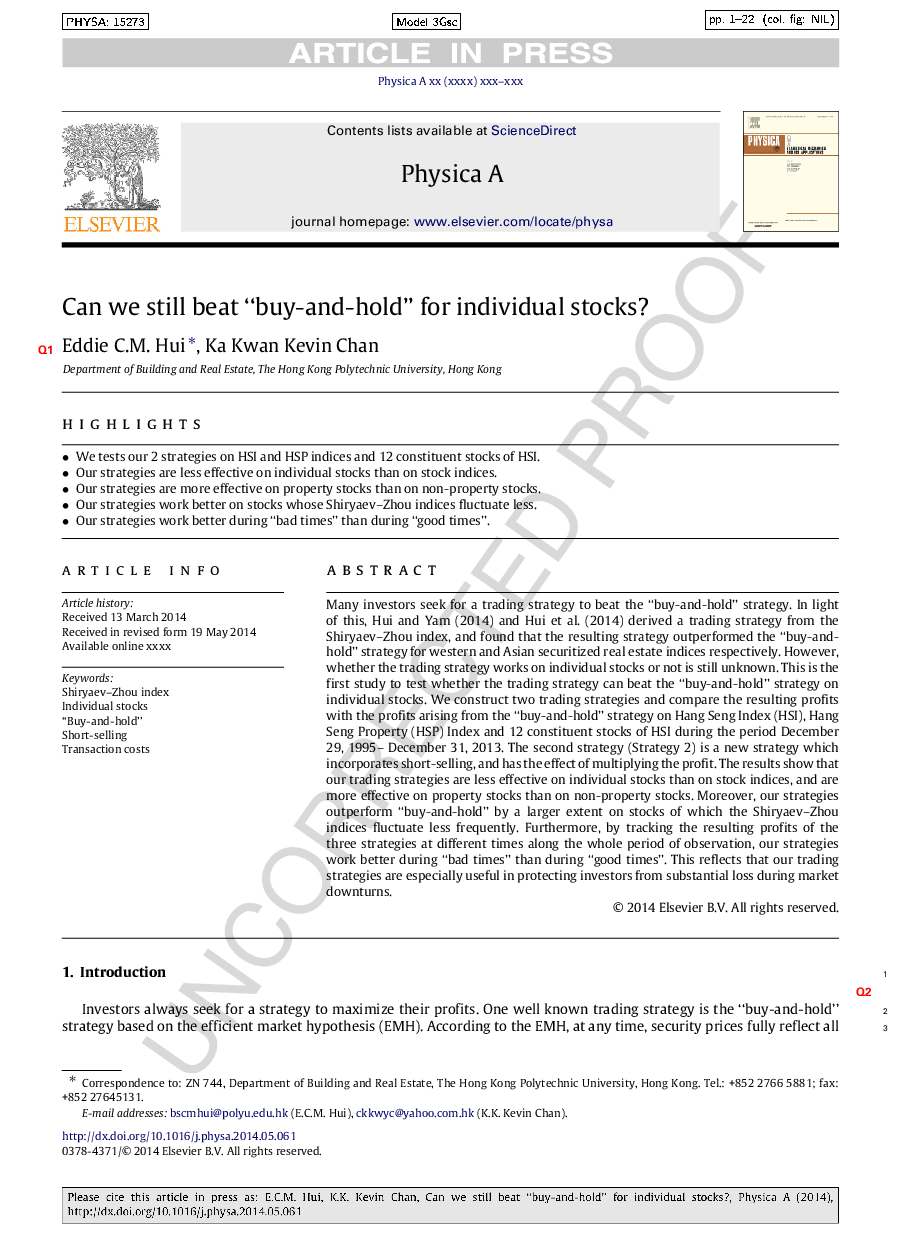| Article ID | Journal | Published Year | Pages | File Type |
|---|---|---|---|---|
| 7380694 | Physica A: Statistical Mechanics and its Applications | 2014 | 22 Pages |
Abstract
Many investors seek for a trading strategy to beat the “buy-and-hold” strategy. In light of this, Hui and Yam (2014) and Hui et al. (2014) derived a trading strategy from the Shiryaev-Zhou index, and found that the resulting strategy outperformed the “buy-and-hold” strategy for western and Asian securitized real estate indices respectively. However, whether the trading strategy works on individual stocks or not is still unknown. This is the first study to test whether the trading strategy can beat the “buy-and-hold” strategy on individual stocks. We construct two trading strategies and compare the resulting profits with the profits arising from the “buy-and-hold” strategy on Hang Seng Index (HSI), Hang Seng Property (HSP) Index and 12 constituent stocks of HSI during the period December 29, 1995-December 31, 2013. The second strategy (Strategy 2) is a new strategy which incorporates short-selling, and has the effect of multiplying the profit. The results show that our trading strategies are less effective on individual stocks than on stock indices, and are more effective on property stocks than on non-property stocks. Moreover, our strategies outperform “buy-and-hold” by a larger extent on stocks of which the Shiryaev-Zhou indices fluctuate less frequently. Furthermore, by tracking the resulting profits of the three strategies at different times along the whole period of observation, our strategies work better during “bad times” than during “good times”. This reflects that our trading strategies are especially useful in protecting investors from substantial loss during market downturns.
Keywords
Related Topics
Physical Sciences and Engineering
Mathematics
Mathematical Physics
Authors
Eddie C.M. Hui, Ka Kwan Kevin Chan,
